Xenoblade Chronicles. The Last Story. Pandora’s Tower. Three games with one thing in common: Nintendo has the worldwide publishing rights, but won’t release them in the US. A popular story earlier this summer was how an organized fan effort called “Operation Rainfall” was going to great lengths to try and convince Nintendo Of America to release the games, only to receive a response that there are still no plans—despite the games being translated into English for European release—but “thanks for being such great fans!”
While I was a little taken aback by the borderline-trolling response from Nintendo Of America, I can’t say I was surprised by their continued lack of interest (or outright opposition?) in releasing these games in the US It certainly wouldn’t be the first time Nintendo decided to leave their US fans out of the equation. Or the fiftieth.
The truth is, Nintendo has a long history of holding games back from US release. The reasons sometimes vary (when reasons are given), but it’s a practice that goes all the way back to the early days of the NES.
To give you a small glimpse of what you’ve been missing, I’ve compiled a list of the twenty non-US first-party Nintendo games that struck me as being the most important, most interesting, or most potentially fun to play. I’ve limited it to mainly console releases (as opposed to handheld) in order to narrow things down. Now, allow me to guide you on a journey into the forgotten past…

JP: 1984, EU: 1987 (NES)
20. Devil World
The first collaboration between Shigeru Miyamoto and Takashi Tezuka (who worked together on the Super Mario series and Legend Of Zelda series), Devil World is a Pac-Man-style maze game that incorporates scrolling levels. The catch? The direction the screen scrolls is determined by your nemesis, the titular Devil, who tries to get you caught against the side of the screen. As Tamagon, a young dragon who looks like a cross between a baby Yoshi and Bub from Bubble Bobble, you must collect crosses and Bibles in order to defeat the Devil.
Why It Wasn’t Released In The US: It’s not out of the ordinary in Japan for Christian imagery to be used simply because it “looks cool” (see: Neon Genesis Evangelion), the way mythological imagery from other cultures can look cool to us. However, America in the 1980s was a place where games like Dungeons & Dragons were regularly being accused of having links to the occult and/or teen suicide, and a game that involved a young dragon entering Devil World (“Hell?”), using crosses to breathe fire, and cramming Bibles into a Devil Machine in order to clog it up probably wouldn’t have gone over too well here.
Nintendo was still fairly new Stateside and was trying to establish itself as a family-friendly brand, so it was probably in their best interest to avoid any potential controversy that could result in being labeled “Satanists.” As a result, Devil World became the first Nintendo game to be localized into English for Europe but not released in the US
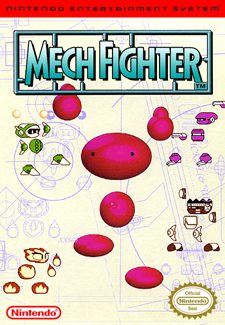
1993 (NES)
19. Mech Fighter
(Also Known As: Joi Meka Faito, Joy Mech Fight, Battle Battle League)
Mech Fighter (as the title may have been localized) has the distinction of being first Nintendo-published fighting game (unless you count Urban Champion, which I don’t). It also included an at-the-time record number of playable characters.
However, today it’s almost more interesting as a programming experiment than as a fighting game. It began life as a project by two developers who met at a Nintendo-hosted programming seminar. The limitations of 8-bit games at the time made it difficult to animate large characters, which were constructed of many sprites. Mech Fighter found a way around this by designing characters that would be constructed of floating, disconnected robot parts. From a technical standpoint, going with this approach allowed for animations that seemed almost surrealistically smooth in comparison to games at the time (even 16-bit games).
Why It Wasn’t Released In The US: When the two programmers responsible for the game (which they called “Battle Battle League”) were hired by Nintendo after the seminar, Nintendo decided they wanted to publish it. However, the game had two strikes against it right out of the gate: it was an NES game at a time when the SNES had been out for two years, and it was an 8-bit fighter in the days of Street Fighter II and Mortal Kombat. Nintendo had continued to support the NES several years after the release of the SNES, but the majority of the games published during this time were of the puzzle variety. Perhaps a fighting game was thought to require more in the way of localization than it was worth?

1997 (SNES)
18. Excitebike: Vroom! Vroom!
Mario Battle Stadium
(Also Known As: Excitebike: Bun Bun Mario Battle Stadium)
What could’ve been better than an SNES installment of Excitebike? How about an SNES installment of Excitebike with Mario characters!
In Japan, there was an add-on for the Super Famicom called the Satellaview. The Super Famicom was placed on top of it, doubling the system’s height, but also allowing it to essentially connect to the internet. That’s right, Nintendo’s consoles in Japan had a form of internet connectivity as far back as the SNES days. Among other things, the service contained a number of downloadable games not available in stores. And one of those games was Excitebike: Vroom! Vroom! Mario Battle Stadium. Though for all the great additions (such as coins that improve your turbo, bonus games, and the aforementioned Mario characters of course), it also removed the track editor, and added some really awful rubber-banding.
Why It Wasn’t Released In The US: Not only was it created for an online service that didn’t exist outside of Japan, but it was released a year after the N64 had been out, making a cartridge port less appealing from a commercial standpoint.
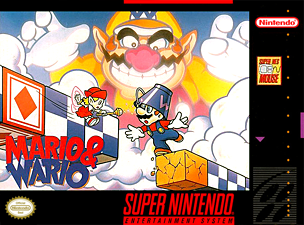
1993 (SNES)
17. Mario & Wario
The epic crossover everyone wanted to see! Though maybe not quite like this. Developed by Game Freak (pre-Pokémon), Mario & Wario is a platform puzzler that required the SNES Mouse of Mario Paint fame.
Wario has dropped buckets on the heads of various Mario characters, obscuring their vision (and apparently their ability to remove buckets from their heads). As a fairy named Wanda, you guide the characters across platforms, directing them in what direction to go, and using your wand to make blocks appear when necessary. The goal is to get the character over to Luigi, who will then use his expert bucket-removing skills to remove the buckets from his friends’ heads.
Why It Wasn’t Released In The US: It’s unclear exactly why the game was never brought over to the US, especially when the Japanese version is already entirely in English. I can only speculate that they felt not enough people had bought the SNES Mouse, which would certainly be in line with Nintendo Of America’s approach to things nowadays.
Call me crazy, but it seems like releasing more games for a piece of hardware would make said hardware more attractive to a potential customer. This seems to be a foreign concept to Nintendo Of America, who don’t see that point in publishing more games for a particular audience if not enough of them bought the hardware in the first place. At least, that’s the only explanation I can come up with for why NoA has refused to publish close to a dozen Wii games in the US, almost all of which would have appealed to the “core” gamer that they feel have abandoned them (due to a lack of appealing games!)
But we’ll be discussing that plenty more as we get deeper into this list. My question is: since Mario & Wario wouldn’t necessarily be a terrible fit for the DS stylus, might we ever see it come to the eShop’s Virtual Console?

1998 (SNES)
16. Wrecking Crew ’98
Remember that Satellaview thing I was talking about earlier? Well, Japan also had another unique service for the Super Famicom: kiosks in stores that would let you write a game (from a select list) to a blank cartridge. This service was called Nintendo Power, and some games were only available exclusively through the service, one of those being Wrecking Crew ’98. It included two games in one: the NES original, and a 16-bit update that reworked it into a Tetris Attack-style competitive puzzle game.
Why It Wasn’t Released In The US: Similar to the SNES Excitebike, this one wasn’t available until two years after the N64 had been out. But again: where’s the Virtual Console love? You’d almost think Nintendo doesn’t want people’s money, the way gamers who’d gladly pay are forced to play on emulators instead.

1986 (NES)
15. The Mystery Of Murasame Castle
(Also Known As: Nazo No Murasame Jō, Mysterious Murasame Castle)
Developed in between Super Mario Bros. and Legend Of Zelda, Mystery Of Murasame Castle could be viewed as a “missing link” between the two games. Set in Edo-era Japan, it stars a Samurai named Takamaru, who fights ninjas in levels featuring a non-scrolling top-down view reminiscent of Zelda, but that retain elements of Super Mario Bros. such as level timers and earning points from defeating enemies or clearing levels.
It was released for the Famicom Disk Drive, an add-on for the Famicom that played rewritable discs that contained more memory, allowing for games to be larger, and to contain save files for the first time. Advances in technology eventually led to the ability to port many of these games to cartridges for the NES, though usually replacing the save files with passwords.
Why It Wasn’t Released In The US: Mystery Of Murasame Castle was intended to be a launch title for the Famicom Disk Drive, but delays led to it being released just a few months after Legend Of Zelda. Possibly overshadowed by this similar-looking but superior game, Murasame Castle didn’t sell nearly as well, and fell into obscurity.
More recently, Takamaru has had a minor comeback of sorts. In 2010, Tecmo Koei was able to get permission to include the character in Samurai Warriors 3, as part of a tribute/remake of Murasame Castle in the form of a side-mode, which did get released in the US Maybe this will lead to his finally being included in the next installment of Super Smash Bros.?

2000 (N64)
14. Sin & Punishment
(Also Known As: Tsumi To Batsu: Hoshi No Keishōsha,
Sin & Punishment: Successor Of The Earth)
Sin & Punishment is a third-person run-and-gun rail shooter developed by Treasure, known for their cult classic shooters like Gunstar Heroes and Ikaruga. Breaks in between the action feature a fairly heady story about a genetically engineered species created by humans to be a source of food, but that have turned on their creators.
Why It Wasn’t Released In The US: It seems a US release was intended from the start, going so far as to record all the dialogue in English, but was quietly cancelled as release neared, possibly due to being so close to the end of the N64’s life-cycle (the GameCube had already been announced). The game developed a small cult following, complete with a fan translation. Perhaps due in part to the cult following and the English voice tracks, when Nintendo prepared Sin & Punishment for a re-release on Virtual Console, they decided to make it available internationally as well. The only catch is that the price was raised to $12, up from the usual $10, to make up for the additional work in translating the menus.
Despite being the most expensive game on Virtual Console, it sold well enough to lead to a sequel, 2009’s Sin & Punishment: Star Successor for the Wii. Nintendo put some effort into marketing the game, going so far as to even assemble a TV commercial, but the resulting sales were likely a disappointment. I’m certain the difficult-to-market phrase “Sin & Punishment” didn’t help, which makes the game sound like a BDSM simulator for the Wii. The original working title for the first game was Glass Soldier, which would’ve been much easier to sell to a wider audience.
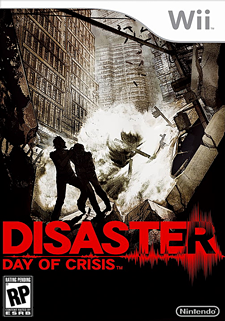
2008 (Wii)
13. Disaster: Day Of Crisis
If you thought John McClane had some bad days, wait until you meet Raymond Bryce. Single handedly taking on a terrorist group, disarming stolen nukes, rescuing the kidnapped sister of a dead friend, and braving various natural disasters (plural), McClane has got nothing on this guy.
Which isn’t to say that the game is good. Reviews were pretty mixed (perhaps depending the reviewer’s tolerance for waggle), with most agreeing that the story was a bit ridiculous and filled with hammy dialogue…or so bad it’s good, depending on your outlook. But one thing that can’t be denied is that the game was an interesting experiment, taking chances and mixing genres, even if the result seemed unfocused.
Why It Wasn’t Released In The US: As if to make Bryce’s day even worse, he’s an American character in a game that takes place mostly in America, and his game ended up being the first for the Wii to be published in Japan and Europe but not America. No explanation has been given as to why.

2010 (Wii)
12. Dynamic Blade
(Also Known As: Zangeki No Reginleiv, The Slashing Of Reginleiv, Reginleiv The Slasher, Dynamic Slash, Dynamic Zan)
Imagine, for a moment, that you are standing in front of a screen displaying what looks to be a third-person fantasy hack-and-slash. Someone hands you a Wiimote and instructs you to make some slashing motions towards the screen. As you’d expect, the character on screen slashes with their sword in the same motion. However, what you didn’t expect was that the position and direction of the random slashes you made would determine which limbs on the enemy just fell to the ground, the blood spraying out from the wounds. You look down at the Wiimote to confirm that you are, in fact, playing this game on a Wii.
In Japan, Dynamic Blade shipped with a black case, rather than the usual white, possibly to make it stand out as being a Mature title. Or possibly just to make it look cool, as the logo was printed with stylish silver foil. Either way, this is a game that definitely would’ve caught “core” gamers’ attention, even if the gameplay is a tad on the repetitive side.
Why It Wasn’t Released In The US: If I had to wager a guess, I’d say that it appears that Nintendo Of Japan was interested in publishing a Mature title, and Nintendo Of America is not.

1988 (NES)
11. NES Wars (series)
(Also Known As: Famikon Wōzu, Famicom Wars, Nintendo Wars)
If you’re a fan of Nintendo handhelds, you may be familiar with a turn-based strategy series called Advance Wars. What not many people realize is that the series actually goes back to the NES days.
One of the earliest games developed by Intelligent Systems (WarioWare, Paper Mario, Fire Emblem), NES Wars plays like a combination of Chess and Risk, requiring strategy in what units you choose to place, and where. It also contained a Metroid cameo in the form of “Commander Samusun” (Intelligent Systems would later do the programming for Super Metroid). NES Wars was followed by Game Boy Wars, and Super NES Wars (available only via the Nintendo Power service).
Why It Wasn’t Released In The US: Intelligent Systems’ Kentaro Nishimura confirmed in an article in Edge Magazine that Nintendo believed at the time that there was no audience outside of Japan for turn-based games. While developing the Game Boy Advance installment Game Boy Wars Advanced, Intelligent Systems put great effort into making the game as accessible as possible, going so far as to include a tutorial so that people wouldn’t need to read the manual. When the US marketing people loved it, asking: “But this is great! Why can’t we sell it over here?” The result became Advance Wars in the US. “Advance Wars’ success shifted Nintendo’s attitude over western tastes,” Nishimura says, opening the doors for US releases of other series such as Fire Emblem.
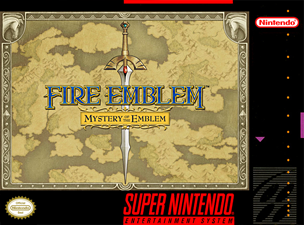
1994 (SNES)
10. Fire Emblem (series)
In 2003, a game entitled simply Fire Emblem was released to the Game Boy Advance. The lack of Roy or Marth no doubt led some fans of Super Smash Bros. Melee to realize they’d missed a few previous installments, but I’m not sure how many people were aware this game was actually the seventh in the series.
Like NES Wars, Fire Emblem is an Intelligent Systems-developed series that goes all the way back to the NES days. The first installment, Fire Emblem: Shadow Dragon And The Blade Of Light, follows the story of a prince named Marth, who leads an army to rescue his sister and reclaim the kingdom of Altea. What makes the game interesting is the way it combines an RPG framework with the tactical turn-based strategy of NES Wars. Combat plays out on its own, the outcome dependent on the stats of the characters.
In 1994, Nintendo released a sequel for the Super Famicom that also included a 16-bit remake of the original. Fire Emblem: Mystery Of The Emblem was divided into two parts, the first containing the entirety of the first game, and the second being a continuation of the story.
Why It Wasn’t Released In The US: As with NES Wars, Nintendo didn’t believe there was an audience outside of Japan for turn-based games. After being proven wrong with Advance Wars, the next four installments for the series (two for the GBA, one for the GameCube, and one for the Wii) were released internationally. Eventually, there was also an internationally released DS remake of the first half of Fire Emblem: Mystery Of The Emblem (itself a remake of the original 8-bit game), entitled Fire Emblem: Shadow Dragon.
Two years later, a DS remake of the second half of Mystery Of The Emblem was released, which may’ve been called Fire Emblem: Heroes Of Light And Shadow…if it had been released internationally. Unfortunately, it seems Nintendo has changed their attitude about western tastes once again. It looks like we may never get to see the remaining early installments of the series (including Fire Emblem: The Binding Blade, the one that starred Roy), and possibly won’t be seeing any further installments, either.
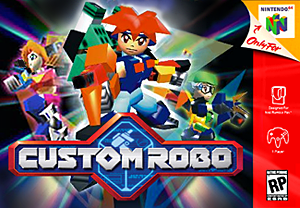
1999 (N64)
09. Custom Robo
(Also Known As: Kasutamu Robo)
“Wait,” a few of you might say, “I distinctly remember playing Custom Robo before. I had it for the GameCube and/or Nintendo DS.” Ah, but there were actually two installments for the N64 before all that (plus a silly 2D version for the Game Boy Advance). At a time when the PlayStation and Sega Saturn had games like Armored Core and Robo Pit, N64 owners could’ve been having customizable robo battles of their own, in a game that played like a Nintendo version of Virtual On at that.
Why It Wasn’t Released In The US: Because… Nintendo? Honestly, sometimes that’s the only possible explanation for the decisions Nintendo makes. I think it could’ve ended up a bigger name if it’d been introduced during the N64 era, when customizable robo combat games seemed to be at the height of their popularity, but who’s to say.

2008 (Wii)
08. Fatal Frame 4
(Also Known As: Zero: Mask Of The Lunar Eclipse, Fatal Frame IV: Mask Of The Lunar Eclipse)
A series originally exclusive to the PlayStation 2 (with the first two installments later ported to the Xbox), Nintendo opted to publish the fourth installment as a Wii exclusive. Development was a collaboration between Grasshopper Manufacture’s Suda51 (No More Heroes, Shadows Of The Damned) and Tecmo’s Makoto Shibata (Fatal Frame series), with input from Nintendo. The game follows the story of three women who were all kidnapped by the same serial killer when they were younger, but have no memory of what transpired. Ten years later, they return together to the island to search for clues that might jog their memory.
Why It Wasn’t Released In The US: Like Dynamic Blade, I’d say that it appears Nintendo Of Japan was interested in publishing a horror title, and Nintendo Of America is not. To confuse matters, NOA president Reggie Fils-Aime is on the record as saying “we are not the publisher of that title in the Americas,” while Tecmo confirms that NOA is, in fact, the publisher of that title in the Americas, but “respects the final decision made by Nintendo Of America.” How I’d love to know what the hell is going on at NOA. Does Reggie Fils-Aime even know?
Meanwhile, Nintendo Of Japan has announced a remake of Fatal Frame II coming to the Wii sometime in 2011 (or is it?). Whether or not it does comes out in Japan, I can tell you where it won’t be coming.

2009 (Wii) / 2010 (DS)
07. Another Code: R – A Journey
Into Lost Memories / Last Window: The Secret Of Cape West
(Also Known As: Anazā Kōdo: R – Kioku no Tobira, Another Code: R – Memory’s Door / Last Window: Mayonaka no Yakusoku, Last Window: Midnight Promise)
I’m going to cheat and include both of these as a “tie,” because I’d just be writing pretty much the same thing for both. Both developed by Cing, Last Window is a sequel to cult classic Hotel Dusk: Room 215 for the Nintendo DS, while Another Code: R is a Wii sequel to DS game Another Code: Two Memories. Like most of Cing’s other games, these are modern takes on the graphical text adventure genre, requiring a great deal of reading, but complimented by a beautifully designed and animated world that doesn’t require text commands in order to interact with the character’s surroundings. I’d also like to add that the Japanese release of Another Code: R had one of the nicest-looking videogame covers of 2009.
Why They Weren’t Released In The US: Nintendo used to publish all sorts of graphic text adventure games back in the NES and SNES days—Famicom Detective Club, Famicom Fairytales, Time Twist—though none of them showed up outside of Japan. They probably felt that, like turn-based games, there just wasn’t an audience for it elsewhere.
The thing is, maybe they were right in this case. It seems like every time Cing releases a game, there’s always a percentage of reviews that essentially say “tl;dr,” or that if they wanted to read a book, they would’ve picked up a book. If someone tried doing the same thing with voice acting instead of text, there’d be similar complaints about it containing more cutscenes than game. Which is a valid complaint if you’re expecting one thing and getting another. I just think it’s an interesting genre that could be explored further. However, it’s also one of the most uncommercial genres, being too dry for “casual” gamers, and too slow-paced for “core” gamers. Another Code: R and Last Window are like the videogame equivalent of independent films.
These were Cing’s final two games before going bankrupt in 2010. It’s unknown whether the bankruptcy may’ve been related in some way to Nintendo Of America’s decision to not release either game in the US, despite both having been translated into English and released in Europe.
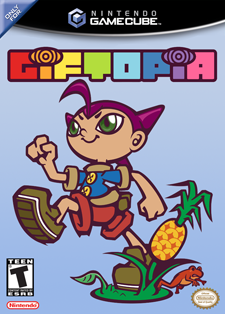
2003 (GameCube)
06. Giftopia
(Also Known As: GiFTPiA)
Did you know that the GameCube has a smaller number of first-party Nintendo games unreleased in the US than any other console? They did a pretty good job of bringing over almost everything they could that generation, though they did still miss a few.
Developed by Skip Ltd., a company founded by some former Square employees, Giftopia is a quirky, non-combat adventure game that has been described as sort of like Animal Crossing with objectives. You play as Pockle, a slacker who has managed to oversleep on the day of his coming of age ceremony, an event held to declare a citizen of the island to be officially an adult. Now he must raise the funds for another ceremony, by doing random tasks for others. Until then, he has been given an early curfew, a ball and chain, a robot parole officer, and a requirement that his face remain pixelated until further notice.
Why It Wasn’t Released In The US: Would you believe the mostly-official explanation is that it was considered “too strange” for US audiences? I didn’t even think that could be a reason. I mean, being strange was half of EarthBound‘s appeal. Telling me that just makes me want to play it more.
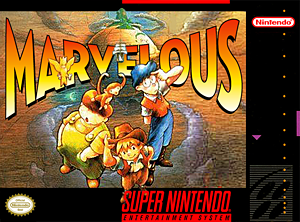
1996 (SNES)
05. Marvelous
(Also Known As: Marvelous: Mōhitotsu No Takarajima,
Marvelous: Another Treasure Island)
You might say it’s to top-down adventure what EarthBound is to the RPG. The player takes control of a group of three kids who, like The Goonies, are searching for a rumored hidden pirate treasure that’s said to be guarded by numerous puzzles and traps. Heavily influenced by Legend Of Zelda: A Link To The Past on the SNES, creator Eiji Aonuma says Marvelous is what led Shigeru Miyamoto to bring him on as director of Legend Of Zelda: Ocarina Of Time. Surprisingly for a game of this pedigree, there hasn’t even a fan-translation of the main adventure (let alone the “DLC” quests that were on the Satellaview) as of this writing.
Why It Wasn’t Released In The US: Because it was too late into the SNES’s life-cycle? Because it would’ve required too much localization? Because initial sales to EarthBound were considered disappointing? Because Nintendo? All I can give you is speculation.

2008 (Wii)
04. Captain Rainbow
(Also Known As: Kyaputen Reinbō)
Imagine if Conker’s Bad Fur Day had been filled with cameos from Nintendo characters. Now imagine if Conker was replaced with a slightly more mild-mannered character—a recently out-of-work superhero with a dwindling fan-base—and if half of those cameos were from Nintendo characters on this very list. Takamaru from Murasame Castle, the Devil from Devil World, the soldiers from NES Wars…there’s even Lip of Panel De Pon, a character who doesn’t appear on this list because her games have always been released in the US (she just ends up written out of them when they’re rebranded as things like Tetris Attack and Pokémon Puzzle League). These are the Rodney Dangerfields of the world of Nintendo; they get no respect. The most well-known Nintendo character in you’re likely to find in the game is Birdo from Super Mario Bros. 2, who has been locked up by Mappo (the robot parole officer from Giftopia) for using the women’s restroom, because he doesn’t believe Birdo to be female (the instruction manual for SMB2 continues to haunt her). The proof Captain Rainbow is eventually able to find is blurred out on screen, but apparently is capable of vibrating…
As Captain Rainbow, you complete challenges such as this one in order to receive stars, which are capable of granting wishes. Each time you receive one and bring it to the alter at the top of the island, you are given a choice between granting your own wish, or granting the wish of one of the cameo characters you’ve met. Granting the wishes of all the characters results in the best ending. Which is interesting, because while some of the wishes are harmless enough (the soldiers from NES Wars wish to become the world’s greatest volleyball team), other wishes are a little…odd (Crazy Tracy from Link’s Awakening wishes to enslave all the men of the world).
Why It Wasn’t Released In The US: Did I mention that this game was developed by Skip Ltd., the people responsible for Giftopia? If Nintendo considered that game “too strange,” they must consider this one certifiably insane. I suppose it’s fitting, in a way, that a game that stars so many characters from this list would also end up on this list. Why, Nintendo? Why must you keep so many games from me that I want to play? I’m selling my Wii, Nintendo. It’s on Craiglist right now, is that what you wanted? Is it?
Breaking up is so hard to do…

2000 (N64)
03. Mario Artist / 64DD
When it came to their first three consoles, Nintendo loved the idea of system add-ons that gave a system extra power in some way. The Famicom had a Disk System that created more space for games and the ability to save. The Super Famicom had the Satellaview, which added internet connectivity and downloadable games. The 64DD (64DiskDrive) did both of these things at the same time. It’d allow you to play against other gamers online, and also offer a disk format that played larger games, especially RPGs.
One of its main launch games was going to be a suite of software called Mario Artist, which would essentially be a 3D follow-up to Mario Paint. The idea is that you’d not only be able to paint images or textures and create music, but also render simple 3D shapes, and create 3D animations. The plan is that there would then be an expansion that let you use all these tools to create 3D mini-games, and then share these mini-games online, sort of like WarioWare D.I.Y. but on a larger scale (and ten years earlier). You’d also be able to use to use the tools to theoretically create or customize content in other 64DD titles. This could’ve changed everything!
Why It Wasn’t Released In The US: Though it was announced before the N64 even launched in 1996, it had a troubled development cycle and wasn’t released until 1999. Even though the Gamecube wouldn’t appear for two more years, Nintendo decided that the 64DD would be a commercial failure. Note that I didn’t say Nintendo was worried that it would be a commercial failure, or that it ended up being a commercial failure. Nintendo literally decided it would be a commercial failure, and guaranteed this in Japan by selling it exclusively through a mail order service rather than offering it in stores. They didn’t even bother attempting to sell it internationally.
Most of the games scheduled for it were either cancelled or ported elsewhere. It launched with the basic Mario Artist tools, but the Game Maker expansion was cancelled—you could only share art and animations online. An F-Zero X expansion did get released, which not only included twelve new tracks, but also a car customizer, and an actual 3D track editor (using what were essentially the same tools used to design the original tracks)! But Dragon Warrior VII was cancelled and ported to the PlayStation instead. And a planned Final Fantasy VII port was also cancelled—can you imagine what a game-changer that would have been?
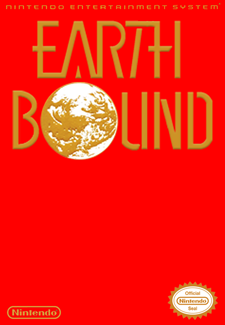
1989 (NES)
02. Earth Bound
(Also Known As: Mother, EarthBound Zero)
If you were a gamer during the SNES era and EarthBound is not in your personal Top 10 list of greatest SNES games, I’m pretty sure you never played it. Overlooked upon initial release, it developed a cult following over time via word of mouth, much like Super Metroid. However, many gamers are still unaware that EarthBound was actually a sequel to an NES era game that was never released outside of Japan. The worst part? It was fully localized and ready to go in 1991 under the title Earth Bound.
Why It Wasn’t Released In The US: The marketing people at Nintendo Of America weren’t sure what to do with it. See that box art mock-up over to the right, that tries to imitate the Japan box art? That’s probably not what it would’ve looked like. No, it likely would’ve looked much gaudier, like the SNES EarthBound (or Super Metroid), rather than elegant and bold like the NES Legend Of Zelda. While it didn’t help that the SNES was already going to be arriving that same year, the people at NOA knew they’d need to make a big push in order to sell the game, especially since RPGs were still fairly niche in the US. Unfortunately, they had no idea how to push.
So rather than take a chance and just put it out there, they decided to cancel it and wait for the then-upcoming SNES sequel. The advertising campaign they came up for the SNES release of EarthBound? “This game stinks,” with a scratch-n-sniff theme. In Japan, the game was advertised as: “Adults, children, and ladies too. Super Famicom software: Mother 2.” And the game appealed to all those groups, becoming a giant hit in Japan. Hell, even Japan’s slogan for the first game, “No tears until the end,” would’ve been far superior to “This game stinks.” But Nintendo Of America decided it wanted to limit its audience to pre-adolescent boys, and failed even at appealing to them. Increasing the price by packaging the game by default with a full-sized strategy guide probably didn’t help matters.
In 2003, a Mother 1 + 2 collection was released for the Game Boy Advance. This could’ve been the perfect opportunity for fans outside of Japan to finally play the first game. However, this time the release ran into a different problem: it turns out that the music tracks in both Mother and Mother 2 sample heavily from copyrighted sources, something the legal team didn’t catch during the SNES release of EarthBound. Since the game remained fairly obscure, none of the copyright holders seemed to notice. However, with the advent of the internet, it’s now much easier for word to get out, even unintentionally when fans are just sharing observations with other fans. As a result, it’s possible that if the games were ever re-released as-is, Nintendo could end up hearing from the lawyers of The Beatles, The Beach Boys, etc. The alternative would be redoing all the music tracks that contain samples, but that would require additional production costs. Hence why you will never see EarthBound appear on Virtual Console either.
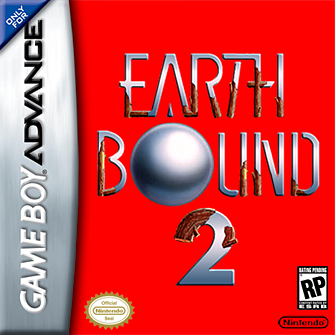
2006 (GBA)
01. EarthBound 2
(Also Known As: Mother 3, EarthBound 64)
Lucas is the poster child for games Nintendo wouldn’t release outside of Japan. Any fan of the EarthBound series will tell you they knew “Operation Rainfall” wasn’t going to work, because we’ve seen this all before. Nintendo knows just how badly we want EarthBound 2, but we’re never going to see it.
You might not know this, but there was a petition in the US, a ‘Please make Mother 3’ petition and it got about 30,000 signatures! After that, we thought: ‘Wow… EarthBound fans are really solid.'” —Shigeru Miyamoto (2003)
Why It Wasn’t Released In The US: The history of EarthBound 2 is a little complicated, with a troubled development cycle that could be compared to Duke Nukem Forever. It began development in 1994, before the US version of EarthBound had even been released, but by 1997 it was revealed that it was now in production as a 3D game to be released on the 64DD—in the US, it would be titled EarthBound 64. Unfortunately, once it was decided that the 64DD would be a commercial failure, production was halted and the game was cancelled.
Years passed, with creator Shigesato Itoi contemplating whether he should adapt the story into some other medium. Eventually, around 2003, he decided to resume production on the game, going back to 2D and releasing it for the Game Boy Advance. However, by the time it was finished in 2006, the Nintendo DS had already been out for two years. Mother 3 in Japan ended up being one of the last Nintendo releases for the Game Boy Advance, but no US release is planned.
Between 2006 and now, rumors have occasionally surfaced of an EarthBound Trilogy US release for the Nintendo DS, but nothing has ever been confirmed. If by some slim chance it does happen, I’m betting it shows up for the DS once the 3DS has been out for two years, but I’m not going to hold my breath.
“Thanks for being such great fans.”
Did you enjoy this article? Would you like to see more articles like this? Let us know your thoughts in the comments below!

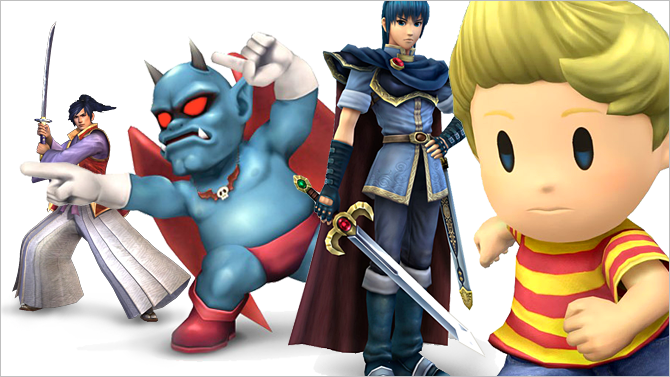
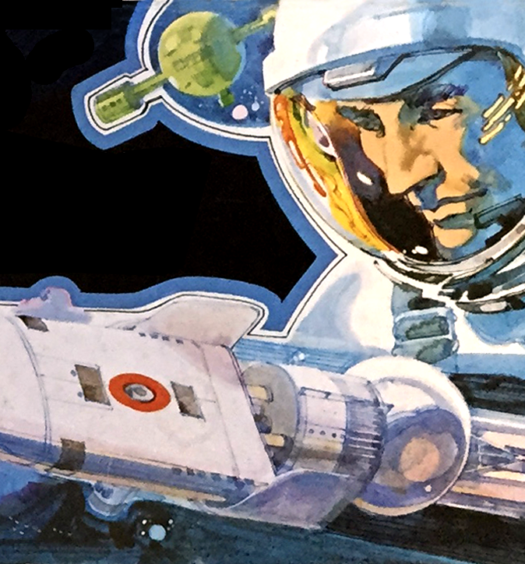
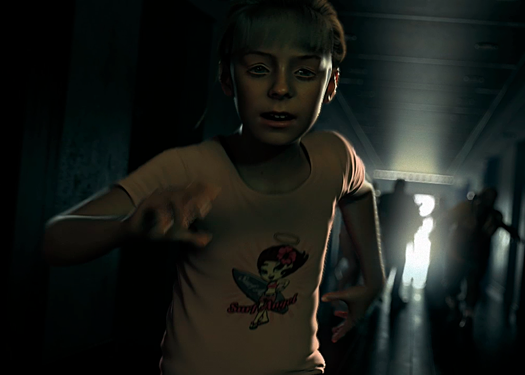








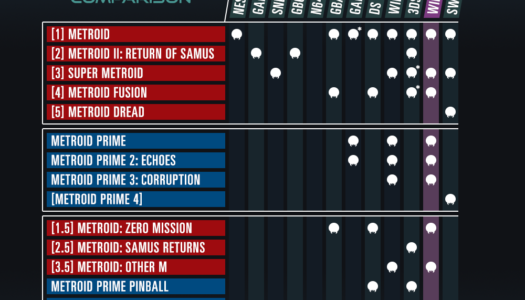
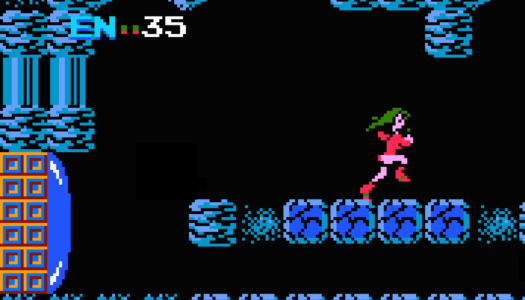
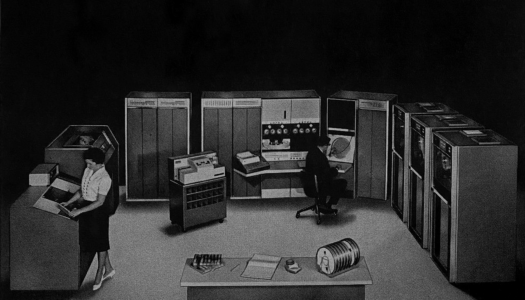
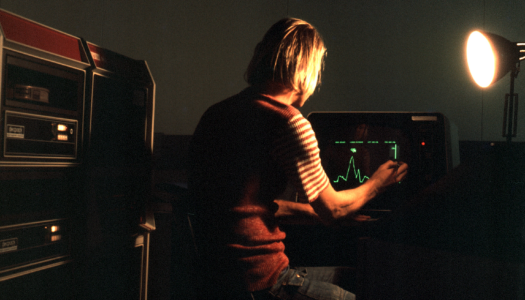
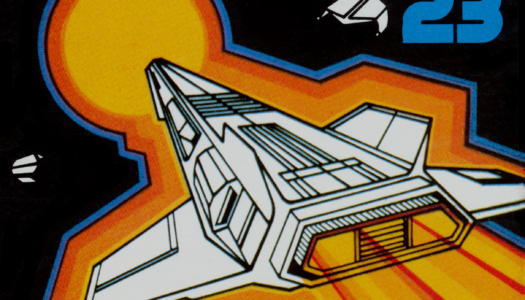

September 12, 2011
[…] post: Top 20 Games Nintendo Wouldn't Release In The US » Critical Hit … This entry was posted in Uncategorized and tagged america, effort-called, european, Game, […]
September 12, 2011
Actually you are incorrect about a couple things in the Earth Bound section. Earthbound itself did not fail because of the localization, but rather because of the large cost of the game, since you had to buy it in a huge box. Also Earth Bound literally uses one track that has copyright disputes, so of all three games, it is the most likely to get a rerelease here. Other than that, this is a great article.
September 12, 2011
I assume you meant marketing rather than localization? (Localization = translation.)
EarthBound failed for a combination of reasons, the higher price of the game being a contributor. But the size of the box actually caused just as much good as harm, since in rental stores it looked very appealing to kids (and the rental price wasn’t increased). But I still think the biggest mistake was marketing it with the “gross-out” approach, which limits your audience to such a small demographic (almost exclusively pre-High School boys), when the game itself is able to appeal to such a large audience. Taking the “gross-out” approach on anything couldn’t have been more of a repellent for me, and if the game itself had actually resembled the ad campaign, it probably wouldn’t be one of my two favorite SNES games (the other being Super Metroid).
And while I’d love for Nintendo to at least release Earth Bound (EarthBound Zero) to the Virtual Console, I have a feeling that it’d be unlikely without them releasing the popular SNES installment first, because that’s how they are.
November 15, 2011
the difference between mother 3 and the 3 Operation Rainfall games is the 3 games are (or are being) translated in english (in Xenoblade’s case being out in Europe and having required them to print more copies to keep up with demand)
theres no copyright issue, and it has sold better then they anticipated in Europe.
NOA even said AFTER (least im pretty sure it was after) they said they had no plans “We will watch Europe’s sales”, well they already were forced to print more copies then the originally made, as well as already being in english AND raved as incredible by pretty much every critic, Reggie kind of dug himself into a very very deep hole.
January 2, 2012
The only ones on the list I played were Sin & Punishment (on the Wii Virtual Console) and the fan translated versions of Mother 3 and Fatal Frame IV.
I enjoyed Mother 3 and S&P but not enough to finish either of them, but FFIV just sucked and I forgive them for not releasing it here. I will import Disaster: Day of Crisis someday I hope.
I would have really liked to play Giftopia and Captain Rainbow (in English) though. I wish other publishers would step up and release the games over here instead, like how Atlus did for Cubivore in North America when Nintendo didn’t want to bring it here.
And when has a game being strange/odd automatically make Nintendo think it will bomb over here? Stuff like Katamari Damacy and even Muscle March on WiiWare, got attention strictly because of how weird and different they were.
January 8, 2012
Great, well researched article (though I’ll note that NoA has relented on Xenoblade now). One thing I was surprised to not see on the list: Doshin the Giant. Yet another quirky game that ended up coming to Europe but not the U.S. There was a rumor it was over some quid pro quo agreement between Nintendo and Atlus and the release of Cubivore, but I’m not sure that’s ever been confirmed.
January 8, 2012
Doshin The Giant was very close to making the list…it was a difficult one to cut to get the list down to twenty.
July 4, 2012
Let’s assume for a moment that the market really is too small to justify producing retail copies for a game in America. If the game is already translated into English they could simply set the region settings on the game to work on American consoles, but still not go out of there way to sell them in America. That will allow those out of territory to buy them. Profits go up without any risk.
In choosing not to release a game in America people are left with only one option: Mod their console. That’s probably why it isn’t against the law to mod a console in America. If you make your console region free, then you could technically buy those games. Of course, once a person gets into modding their console the temptation to take the extra leap and simply download a pirated version of the foreign game become much higher proportional to the difficulty of legally buying it. Nintendo can hardly make the claim that people who pirate foreign games are “stealing” or affecting their profits in any way when the title isn’t even marketed in the territory where the piracy takes place. Once a person has gone through the effort to pirate games for justifiable reasons, it then makes a person much more likely to pirate games they could simply buy in any store which isn’t justifiable. In a roundabout way we can say that the refusal to allow people in one territory to buy titles in another contributes directly to a loss of profits through piracy.
August 29, 2012
You say that quite beautifully I must say, and I agree 100% with you. =)
Yes, consoles should be region-free completely, it just makes sense to do so. ^_^
March 8, 2013
I found Marvelous from another list of Super Famicom games that never got released in the US, and just beat it this morning, in fact. I was definitely excited for a Nintendo-produced action RPG that had the same engine as Link to the Past, and was described as a combination of Earthbound (mainly the character graphics) and Lost Vikings (switching between the 3 characters to utilize their unique abilities). Once I got over the nostalgia induced by a few Link to the Past sound effects, however, I realized this game was going to be a huge disappointment. It’s creator Eiji Aonuma has said that he “hated” the original Zelda, because he didn’t know what he was doing. I was able to figure that game when I was 5 years old, so that probably should have disqualified him from being put in charge of any Zelda games, but playing Marvelous has shown me exactly what he likes in video games: lots and lots of text, mindless “bathroom key” quests, and having everything spelled out for you extremely clearly so that you are simply following directions, without actually figuring anything out. My Japanese is not very good, and the main reason I played to the end was to improve my reading comprehension, but this also provided the only challenge in the game for me, as the only times I got stuck were when I couldn’t quite grasp the Japanese hints, which once I figured out, I realized would have been painfully obvious if they had been in my native language. Most of the game is like the Goron sword quest in Ocarina of time, where you just need to talk to people in the right order, only without time limits, and only in one town at a time. If you still can’t figure it out, there is a bird you can summon who will tell you what to do next. Sound familiar? This game is the origin of what, for me at least, partially ruined the Zelda franchise: not letting you figure things out for yourself anymore. Ocarina of Time was a great game, but Navi was annoying, and ruined a lot of the fun that was in Link to the Past. In the first Zelda games, when you beat a dungeon with your new item, you had to think back to all the obstacles you couldn’t get past without that item, and to try each of them, sometimes only finding rupees, sometimes the next dungeon, and often a whole new area with new puzzles for you to figure out. No faery telling you, “a cold wind is blowing from the direction of Zora’s Domain” for no reason, except to tell you where to go next. And sometimes this faery simply interrupted you, giving you no choice about whether you wanted her to tell you exactly what to do, instead of just ignoring her annoying voice. And ever since, in each Zelda game there has been some character (Phantom Hourglass has two!) who follows you around everywhere, and makes the game too easy, and disrupts the gameplay with too much text. I’m a huge RPG fan, and I don’t mind dialogue in video games, but the solitude of games like Link to the Past and especially Super Metroid were a big part of their appeal, and adding loads of boring texts has added nothing good to the respective series. Marvelous is the precursor to all of that, as well as the whole “let’s get on a boat and go from island to island” plot of Windwaker and Phantom Hourglass instead of giving you a world to explore. Don’t expect anything near Link to the Past or Earthbound, or even Lost Vikings, and don’t really bother playing it unless you are learning Japanese. Actually, just replaying one of the other two in Japanese would be a better use of your time. I just wanted to share my thoughts on this disappointing game because of how high on this list it was, and it wasn’t clear whether the author actually played it or not. It pisses me off that Nintendo refuses to understand its American audience, but if we didn’t miss out on anything better than this, we actually haven’t miss out on much at all.
March 12, 2013
Thanks for the analysis, very interesting hearing more about what the game was like. 🙂
March 12, 2013
No Magical Quest 3? Come friggin’ on!
March 14, 2013
Note: Magical Quest 3 was not a Nintendo property.